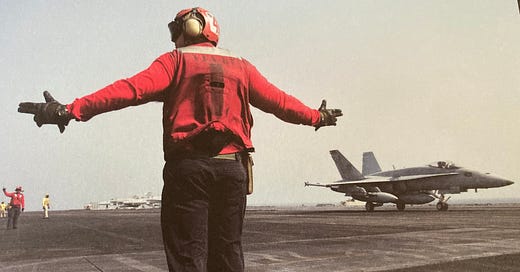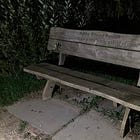What is Critical Reading?
Concentrated critical reading, whether of academic papers, novels, or creative non-fiction, is an iterative undertaking. That is, you read once, read again, and perhaps read several times more, all with the intention of cycling understanding with learning. Because with each reading you bring some of your own knowledge to it, you question, interrogate, and then you find deeper meaning, gain new insight, and can respond to the original work with increased perception.
A Critical Reading Group
While I was a PhD student at the Centre for Place Writing at Manchester Metropolitan University, I accepted an invitation from Dr David Cooper to set up a Place Writing Critical Reading Group for creative writing students. I was left to organise it and run it and Dr Cooper kept an interested eye on progress.
I used social media to advertise a series of fortnightly sessions. I expected a small group since this is such a niche subject. But those who expressed an interest surprised me—they were from inside and outside the University, and included teachers, poets, and writers who were not following any kind of qualification but who were very interested in Place Writing. I kept an open mind about who would benefit from the group, and how the group would benefit from their input, and entered into a few email exchanges before we started, just to make sure we were all on the same page.
Size of the Group
Over several months during 2021 and 2022, we enjoyed twelve early evening meetings online (UK time), of ninety minutes each. Since this was an informal group, attendance was on an ad hoc basis. At times the number of people who had indicated their intention to attend grew to over twenty, and I judged it would be difficult to facilitate a balanced discussion if everyone showed up, so I limited the group to fifteen. With the inevitable no-shows this resulted in an average of seven people at each meeting, a perfectly viable group of constructive minds; it was like a regular tutorial group.
The Texts
I prepared a different text for each meeting, to be read beforehand. Conscious that time was precious these were short pieces of reading—five or six pages at most. I identified extracts that could be described as Place Writing without being definitive about it because I was open to challenge regarding the labelling.
One of the extracts I put forward was from Geoff Dyer’s book, Another Great Day at Sea; it documents his residency on board the USS George H. W. Bush:
‘… some nights I lay in my bunk thinking about the weird perk of having ended up here. Asked, nine months earlier, if there was ‘somewhere unusual and interesting' I'd like to be writer-in-residence I didn't hesitate: Sir, an American aircraft carrier, sir!’ (p60)
Labelling and Genre
At first I intended to only consider examples of creative non-fiction but, in response to the group’s interests (some were poets and others fiction writers), I included some fiction extracts. We talked about the themes we could identify, we considered the style of writing, the language, and whether we thought the content of the piece under scrutiny could reasonably be described as Place Writing. It soon became clear that the label could be applied to a range of forms, from fiction and poetry to non-fiction, including travel writing, memoir, and nature writing.
Using the term ‘Place Writing’
The meetings of the Critical Reading Group made me appreciate the variety of ways people think about Place Writing, as well as the potential for more in-depth debate. Our conversations were lively. However, I was uneasy over the way we manipulated the term ‘place writing’ to suit almost all writing that involved skilful description of place. Since this was an informal group, it was essential to encourage free-flowing conversation and, as facilitator, I maintained an open attitude while guiding a productive examination of the texts. However, I began to feel the need, personally, to be more certain about my own use of the term.
Towards a Definition
In Dr Cooper’s lengthy and wide-ranging essay in The Routledge Handbook of Place, ‘Contemporary British place writing: Towards a definition’, he suggests the need for more investigation into genre, and that a larger body of creative non-fiction Place Writing needs to emerge before public recognition of the definition is forthcoming.
In Dr Cooper’s ‘Conclusion’, he urges scholars to ‘adopt a (…) pluralistic approach when defining the genre’ (2020:642). Having researched works of Place Writing for my doctoral thesis I felt that a clear definition ought to be possible right now, because there is quite a large body of published work, and such an open-ended and incomplete description of the genre seemed problematic to me. And luckily, I had Dr Cooper as my PhD supervisor, so we discussed this quite a bit. I think we both agree that there needs to be more research and more awareness of the genre both within academia and in the public domain.
Inspiration for this Substack
The Critical Reading Group was a good opportunity to discuss texts with others and I hoped it would help me develop my own understanding of the concept of Place Writing. I invited participants to suggest samples of reading material that they would like to discuss in the group and it’s worth noting that while all attendees contributed to the conversations, none were willing to submit pieces for reading. I believe this was due to a lack of confidence in being able to define what is, or what could be termed as, Place Writing. Leaving aside the slight disappointment I felt about this, it reinforced the need for such a group. And it ultimately gave me the push to start this Substack!
Thinking Deeply
In the Handbook, Dr Cooper goes on to say that: ‘Contemporary place writing, then, includes the varied forms of poetry, fiction, memoirs, text-based art, tweets and digital notebooks, to name a few. Ultimately, place writing is a helpfully broad critical label that can capture the rich heterogeneity of contemporary texts—across a range of forms—that think deeply, and complicatedly, about place and its meanings.’ (2020:642)
By referring to Place Writing as a ‘broad critical label’ I think it is being downgraded in the genre hierarchy. As a result, back then I felt, and continue to feel, that I am duty-bound to ‘think deeply’ and I continue to take this rather open definition as a challenge.
I look forward to chatting with you in the comments!
Credits and Links:
Image above is taken from Dyer, G. (2014) Another Great Day at Sea. Visual Editions: London.
Edensor, T., Kalandides, A., Kothari, U. (eds). (2020) The Routledge Handbook of Place. Routledge: London
Place Writing is more than just a newsletter publication, it’s a resource. I went into the archive and found these two posts which I think you’ll enjoy. You’ll be able to add your own comments to the conversations there.







Completely agree. Place writing transcends form. As a graduate of the MA program, I am always prepared to explain what it means when I tell people that I studied place writing. That I am a playwright complicates matters as people sometimes think they have misheard. I often describe place writing as writing that explores our relationship with place - ranging from nature writing to deep mapping of a place.
How does "place writing" differ from the more familiar (to me) term "poetry of place"?